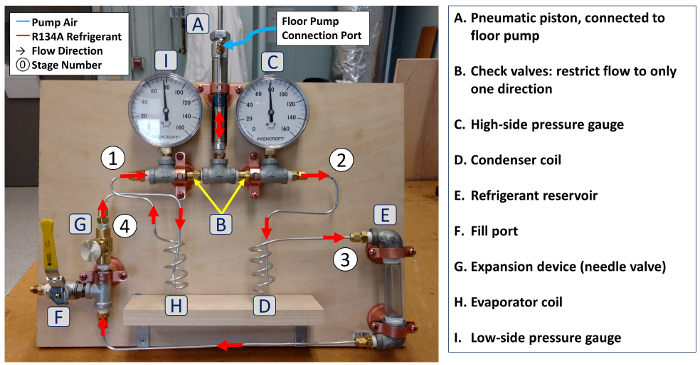Introduction to Refrigeration
Przegląd
Source: Alexander S Rattner and Christopher J Greer; Department of Mechanical and Nuclear Engineering, The Pennsylvania State University, University Park, PA
This experiment demonstrates the principles of vapor compression refrigeration. The vapor compression cycle is the dominant refrigeration technology, found in most refrigerators, freezers, air-conditioning systems, and heat pumps. In this cycle, cooling (heat acquisition) is achieved with low-pressure evaporation of refrigerant. Thermal energy absorbed in evaporation is rejected to the surroundings through high-pressure refrigerant condensation. Mechanical work is applied in the compressor to raise the working fluid from low to high pressure.
While refrigeration technology is ubiquitous, the concealing packaging and autonomous operation of most refrigerators makes it difficult to appreciate the operating principles and function of key components. In this experiment, a rudimentary vapor compression refrigerator is constructed. The compressor is manually actuated with a bicycle pump, allowing intuitive appreciation of cycle operation as the experimenter becomes part of the system. Resulting component pressures and temperatures can be interpreted in terms of the thermodynamic T-s and P-h diagrams, which capture the variation of fluid properties from the liquid-to-vapor states (during evaporation and condensation).
Procedura
Caution: This experiment involves systems at elevated pressures and use of refrigerants, which can be toxic at high concentrations. Ensure reasonable safety precautions are followed and that appropriate PPE is worn. Ensure adequate ventilation when working with refrigerants.
1. Fabrication of refrigeration system (see diagram and photograph, Fig. 3)
- Construct the vapor compressor by first connecting one port of a double-action pneumatic cylinder to a pipe fitting tee. Install a Sch
















